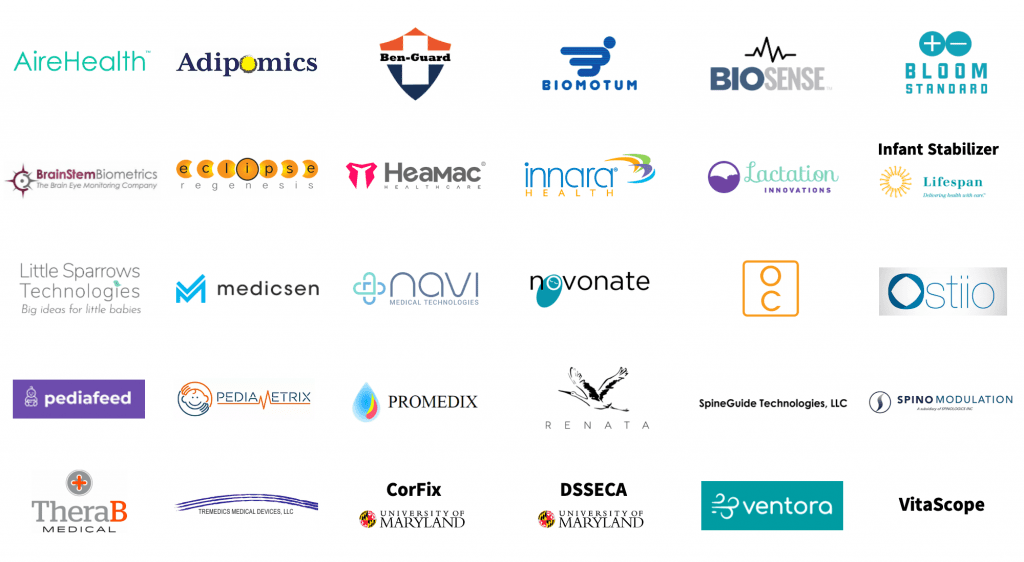
Pediatric Medical Device Pitch Competition Pivots to Virtual Format Amid COVID-19 Crisis
Thirty innovative companies competed for 10 final spots at the National Capital Consortium for Pediatric Medical Devices (NCC-PDI) virtual event on March 23.
COVID-19 wasn’t about to stop the important work being done to meet the large unmet need for pediatric medical devices among patients younger than 18. NCC-PDI’s annual “Make Your Medical Device Pitch for Kids!” pitch competition moved to a 100% virtual event format to keep pediatric medical device innovation moving forward while complying with social distancing recommendations that will help to flatten the curve.
In late March, 30 outstanding companies pitched their pediatric device innovations in cardiovascular, orthopedic, spine and Neonatal Intensive Care Unit (NICU) devices — areas where the need is greatest — to judges in a virtual meeting room setting.

The ten finalists will be announced in May. These ten companies will be invited to participate in the pediatric track of MedTech Innovator’s accelerator program and will compete in the pitch competition finals at the 8th Annual Pediatric Device Innovation Symposium hosted by Children’s National Hospital. The finalists will travel to Toronto to compete for $250K in grant awards in October 2020.
NCC-PDI is one of five members in the Food and Drug Administration’s (FDA) Pediatric Device Consortia Grant Program and is led by the Sheikh Zayed Institute for Pediatric Surgical Innovation at Children’s National Hospital and the A. James Clark School of Engineering at the University of Maryland. Other consortium members are the accelerators MedTech Innovator and BioHealth Innovation, as well as the design firm Archimedic.
NCC-PDI started the pitch competition to advocate for increased pediatric medical device innovation and to support emerging companies in their effort to commercialize devices for the younger patient population.
“We’ve been talking a lot about the size of this market that makes it unattractive for medical device sponsors to invest in pediatric device development. NCC-PDI was established in 2013 and we’ve done a great deal of advocacy through various competitions to get the word out that there is an unmet need and there are incentives and opportunities out there,” stated Dr. Kolaleh Eskandanian, NCC-PDI Co-Principal Investigator and Vice President and Chief Innovation Officer at Children’s National Hospital.
“There is an unmet need for the pediatric population, which is defined as from birth through age 21…What sponsors sometimes do is develop a device for 18 years and older and check the pediatrics box.Therefore, we’ve found out the younger population still is in crucial need for devices. In the past two competitions we introduced specific themes so we can attract ideas that could address the population younger than 18,” she added. “This is one way we can scout ideas that are applicable to this younger group.”
Eskandanian also cited the need for progressive regulatory pathways for pediatrics. She also noted the medical device industry’s tendency to study devices in adults and then apply them to pediatric patients as impediments to pediatric device innovation. NCC-PDI would like to see this approach reversed, where devices start small in the pediatric population and then are scaled up for adult patient use.
The pediatric track of the MedTech Innovator Accelerator will be a powerful resource for the ten finalist companies as they seek to overcome some of these challenges and get their pediatric devices to commercialization. MedTech Innovator’s pediatric track will provide the finalists with in-depth curriculum, powerful mentorship and access to resources that will put them on the path to future growth and success.
“At MedTech Innovator we’re focused on trying to help these companies avoid mistakes. We start off with an assessment of each company and find the areas where they’ll need the most help. We then assign customized resources in the form of mentors and make sure each company gets what they need to succeed,” stated Paul Grand, CEO of the California-based accelerator.
“The smaller market in pediatrics is certainly one major challenge and we help companies explore ways to use their technologies in other indications or populations to increase the market size. That’s just one example of how our pediatric track can help medical device companies overcome some existing obstacles to commercialization,” he added.
Grand and his MedTech Innovator team played a big role in the pitch competition being able to rapidly pivot to a virtual format. The transition was challenging but went off without a hitch and has received universally positive feedback from all participants.
“We’ve been running our accelerator program virtually for some time. This is our 6th year offering the accelerator program, and we’re really comfortable operating virtually,” stated Grand. “We had 60 judges at the online event and used an AI algorithm we developed to build an optimal schedule that rotated the startups over 5 back-to-back pitch sessions to meet with small groups of 3 – 4 judges in each session. This format allowed the startups to spend close to two hours getting feedback from 15 – 20 of the judges most interested in their technologies.”
“We took our proven in-person format and used the virtual tools and platform we’ve been using for years at MedTech innovator to keep this competition moving forward. All our partners gave us the thumbs up,” he added. “It was interesting seeing people in a different context like seeing some judges with their dog in their lap; it was a little more casual than normal but we were still all able to connect and have debate and discussion, just in a different way.”
Companies were evaluated virtually based on four general criteria: (1) Does their device meet an unmet pediatric need; (2) Did they demonstrate an understanding of the regulatory pathways; (3) Do they have the ability to generate follow on funding; (4) The promise of the technology itself. The selection process is rigorous and the follow up with the ten finalists will be comprehensive.
“There are several aspects to this competition that serve to amplify efforts. While there are cash awards, the competition brings together a large group of very talented individuals with very diverse backgrounds all focused on bringing new concepts into the marketplace. Ideas are exchanged, advice is provided, and importantly, connections are made,” stated Bill Bentley, NCC-PDI Co-Principal Investigator and Robert E. Fischell Distinguished Chair in Engineering, Director, Robert E. Fischell Institute for Biomedical Devices and Professor, Institute for Bioscience and Biotechnology Research, at the University of Maryland.
“In the Spring competition last year, we focused on orthopedic issues. We had 12 semi-finalists and selected 5 winners. Importantly, we had over 30 judges – folks with all kinds of different areas of expertise. I talked to a few of the teams that didn’t make it through to the next round and they felt like they were winners. While they didn’t get grant awards, they got feedback. They made connections. They were tremendously assisted by the network…A pitch competition is a tremendous amplifier,” he added.
“This was a very sophisticated and well-rehearsed process. I was inclined to postpone it but I’m so glad we did not so we can keep our important milestones including starting the accelerator program in June. The MedTech Innovator team really tested to make sure everything went smoothly and participants still received the same experience,” stated Eskandanian.
“The only thing we couldn’t do was the reception because we wanted to ensure social distancing,” she added.
The pitch competition, which was originally slated to happen in person at The University of Maryland, College Park, is another sign of increased attention and activity in the BHCR surrounding pediatric device innovation. The Children’s National Research & Innovation Campus, currently being built on the Walter Reed Army Medical Center Campus in Washington, D.C., will be a first of its kind center for pediatric health care innovation. The campus will bring together public and private organizations, including JLABS @ Washington, D.C., and it’s partner, BARDA, that will help progress pediatric medical device innovation as well as acting as an invaluable resource for the life science regional ecosystem.
“We really found strong alignment between our consortium’s mission and that of Johnson & Johnson Innovation and their Child Health Innovation Leadership Department (CHILD). We are always trying to attract more national and international partners to the region,” Eskandanian said. “The pediatric innovation district at Walter Reed will help close this gap in the pediatric medical device market.” The Children’s National Research & Innovation Campus is set to open in December 2020.
In the meantime, NCC-PDI will continue to advocate for increased pediatric medical device innovation and investment by supporting emerging companies through competitions like the “Make Your Medical Device Pitch for Kids!” To date, NCC-PDI has “…mentored over 100 medical device sponsors to help advance their pediatric innovations…with six devices having received either their FDA market clearance or CE marking,” according to a recent Children’s National Hospital press release.
Be sure to keep an eye on BioBuzz to learn more about the ten pitch competition finalists, which will be announced towards the end of May 2020.
- About the Author
- Latest Posts
Over the past 11 years, Chris has grown BioBuzz into a respected brand that is recognized for its community building, networking events and news stories about the local biotech industry. In addition, he runs a Recruiting and Marketing Agency that helps companies attract top talent through a blended model that combines employer branding and marketing services together with a high powered recruiting solution.









